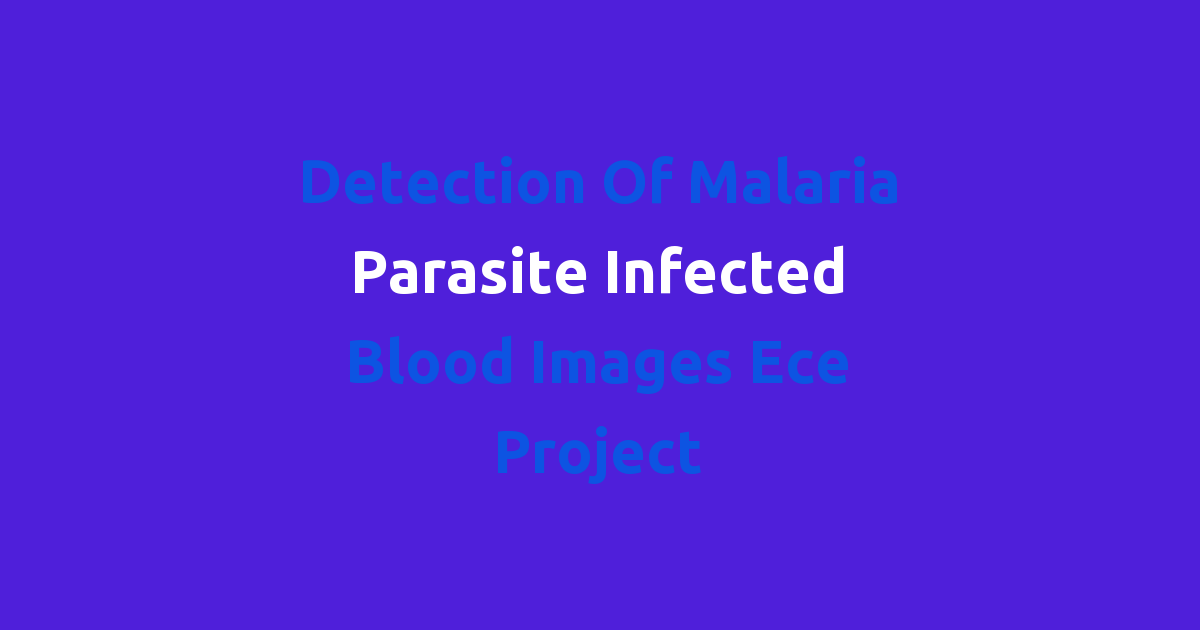ECE project on detecting malaria parasite infection in blood images.
Introduction
Malaria is a life-threatening disease caused by parasites transmitted to people through the bites of infected female Anopheles mosquitoes. According to the World Health Organization (WHO), there were an estimated 228 million cases of malaria worldwide in 2018, leading to over 400,000 deaths. Early diagnosis and treatment are crucial in managing malaria and reducing mortality rates.
Problem Statement
One of the challenges in the detection of malaria is the manual examination of blood samples under a microscope to identify the presence of the malaria parasite. This process is time-consuming, labor-intensive, and prone to human error. Therefore, there is a need for an automated system to detect malaria parasite-infected blood images to improve the efficiency and accuracy of diagnosis.
Existing System
Currently, the detection of malaria parasites in blood samples is performed by skilled laboratory technicians using a microscope. The process involves staining the blood sample with Giemsa stain to make the parasites more visible under the microscope. The technician then manually scans the blood smear slide to identify the presence of malaria parasites based on their morphology.
Disadvantages
- The manual examination of blood samples is time-consuming and labor-intensive, leading to delays in diagnosis and treatment.
- Human error in identifying malaria parasites can result in misdiagnosis and inadequate treatment.
- Skilled technicians are required to perform the microscopic examination, limiting the availability of diagnostic services in remote areas.
Proposed System
The proposed system aims to develop an automated image processing technique to detect malaria parasite-infected blood images. The system will use computer vision algorithms to analyze digital images of blood samples and identify the presence of malaria parasites. By automating the detection process, the system will improve the efficiency and accuracy of malaria diagnosis.
Advantages
- The automated system will reduce the time and labor required for malaria detection, allowing for faster diagnosis and treatment.
- Computer algorithms can analyze large numbers of images quickly and accurately, improving the detection rate of malaria parasites.
- The system can be deployed in remote areas with limited access to skilled technicians, expanding the reach of diagnostic services.
Features
The automated system for detecting malaria parasite-infected blood images will include the following key features:
- Image pre-processing techniques to enhance the quality of blood sample images for analysis.
- Feature extraction algorithms to identify characteristic patterns of malaria parasites in blood samples.
- Classification algorithms to differentiate between infected and uninfected blood samples based on the presence of malaria parasites.
- User-friendly interface for easy input of blood sample images and visualization of detection results.
Conclusion
In conclusion, the development of an automated system for detecting malaria parasite-infected blood images is crucial in improving the efficiency and accuracy of malaria diagnosis. By leveraging computer vision algorithms, the system can analyze digital images of blood samples quickly and accurately, leading to faster diagnosis and treatment. The proposed system has the potential to revolutionize malaria diagnosis and expand access to diagnostic services in remote areas.

